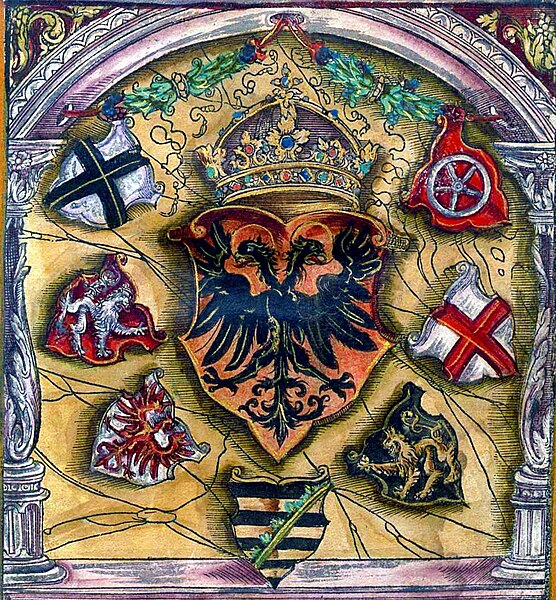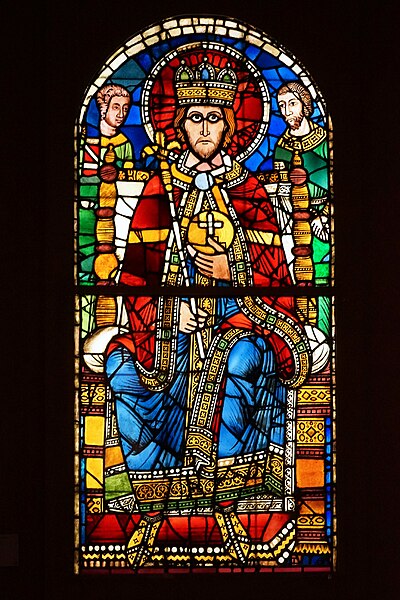Henry III, Holy Roman Emperor
Henry III, called the Black or the Pious, was Holy Roman Emperor from 1046 until his death in 1056. A member of the Salian dynasty, he was the eldest son of Conrad II and Gisela of Swabia.
Henry with the symbols of rulership attending the consecration of the Stavelot monastery church on 5 June 1040, mid-11th-century miniature
Monogram of Henry III
Henry III established the Salian Kaiserpfalz (imperial residence) and spiritual center at Goslar, that includes the emperor's palace, the collegiate church of St. Simon and St. Jude, the palace chapel of St. Ulrich and the Church of Our Lady
Conrad II and his wife Gisela kneel in front of the Majestas Domini, Codex Aureus Escorialensis, around 1045/46, Madrid, Biblioteca del monasterio de San Lorenzo de El Escorial
The Holy Roman Emperor, originally and officially the Emperor of the Romans during the Middle Ages, and also known as the Roman-German Emperor since the early modern period, was the ruler and head of state of the Holy Roman Empire. The title was held in conjunction with the title of king of Italy from the 8th to the 16th century, and, almost without interruption, with the title of king of Germany throughout the 12th to 18th centuries.
Longest reigning Frederick III 19 March 1452 – 19 August 1493
Coats of arms of prince electors surround the imperial coat of arms; from a 1545 armorial. Electors voted in an Imperial Diet for a new Holy Roman Emperor.
Depiction of Charlemagne in a 12th-century stained glass window, Strasbourg Cathedral, now at Musée de l'Œuvre Notre-Dame.
Illustration of the election of Henry VII (27 November 1308) showing (left to right) the Archbishop of Cologne, Archbishop of Mainz, Archbishop of Trier, Count Palatine of the Rhine, Duke of Saxony, Margrave of Brandenburg and King of Bohemia (Codex Balduini Trevirorum, c. 1340).








